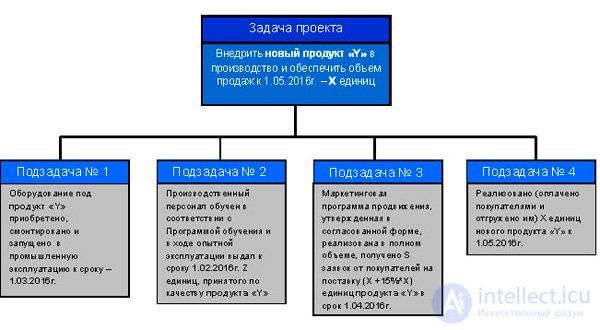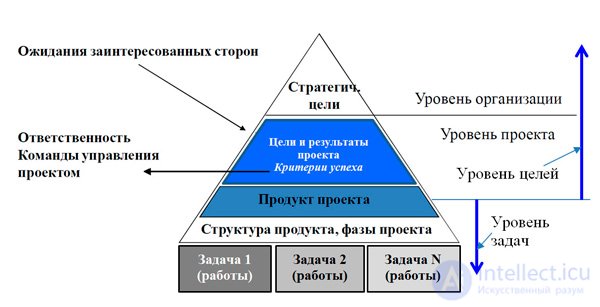Lecture
Content
At the initiation stage, the curator and the project manager develop a charter. They need to designate the purpose of the project, align it with the strategic goals of the enterprise in the section “Justification of the project initiation”. Also, managers make a list of works that are made in the form of a task. Gradually, step by step, the subject and context of the contractual relationship between the customer and PM is built. Under these conditions, the parties must determine the composition of the responsibility that the manager has to assume, and the customer creates a vision of the composition of the results necessary for the success of the project.
A task as a special category of management should be understood as an object that meets five criteria, the presence of which, or the absence of at least one of them, indicates whether it is in fact or not. The key parameter is the exact statement of the result. It is assumed that each task is a special point in the future, some specific result.
To formulate a task is the most delicate and difficult moment in the process of its formulation. In the literal prescription laid the success or failure of the decision. When it was not possible to formulate the result correctly, the likelihood of disputes increases, which can be beneficial for each of the parties: the producer and the performer. Often the wording is performed as a description of an action. Is it competent?
Suppose they write: “dig, saw, deliver ...” or closer to modern project management: “conducting marketing research”, “personnel training”, “purchasing equipment”. The expression feels vagueness and uncertainty. What parameters should match the record? The criteria for correctness of the wording are the following theses:
Correctly formulate a task means to solve it in half. The four conditions cited show us that the results, including intermediate ones, are the project problem. How should it be prepared?
We introduce the concept of a responsible resource for a project task. By a responsible resource we mean a person (an employee of a company or an involved performer) who has the right to take over the job and must do it without referring to the difficulties encountered. Thus, the responsible resource implies the name and surname, as well as the decision budget.
A task is a special microcontract to achieve its result. Consequently, in addition to the responsible resource that is a party to this agreement, it should have a second party, namely, the director. There is a need in fixing the deadline - the exact calendar date.
Not only in the project, but also in the general management, we have to observe situations of disputes, conflicts caused by different interpretations in understanding the task set. It is not difficult to guess the reasons for the dissatisfaction of the parties with each other - there was no formalization of agreements. Therefore, it is very important to correctly formulate the statement of the problem. Summing up, we can summarize and suggest five criteria for the existence of a task.
By goals we mean the set of desired results, for which the project is being started, the project begins. In other words, this is an altered state of the business that we want to achieve and formulate in qualitative (permissible) and quantitative (preferably) forms. Can we say that the key task is the project goal? Yes, in the ideal case it is possible. In a business turn, however, goals differ from tasks by distinguishing the questions they answer.
The first ones in their formulation answer the question of what state should be achieved as a result of the project. At the same time, the latter should answer the question of what intermediate and final results should be provided. Project tasks can and should be considered as a kind of decomposition of the control object of the highest level. Your attention is a typical example of such a decomposition - "Task Tree".

Of interest is also the pyramid of the goals of the project. It is necessary to characterize the levels of this pyramid and determine the place that our management objects occupy on it. Goals consist of two levels. The top is the strategic goals of the organization level, and below - the goals of the project itself.
The strategic goals of the project are the goals achieved in the long term, aimed at achieving the mission and implementation of the company's strategy. It is not advisable to bind PM to them. They serve to align the objectives of the project with the strategic objectives of the company in order to have a long-term benchmark.

The product of the project is a watershed line in a pyramid model. Above the product are the objectives of the project - for what we have created the product and what effects we want to get from it. Below the product of the project in the pyramid diagram are the tasks. They represent a sequence of actions, performing which creates a product.
This article briefly describes the project objectives and goals. The definitions for these important categories are given, which together with the product give the project management object as a whole. Justified key parameters to judge the quality of the formulation of the problem. A project manager, assuming responsibility to the customer, will only be satisfied with his work when he is able to assess the risks of failure to achieve results. Thanks to this, tasks are solved and goals are achieved.
Comments
To leave a comment
software project management
Terms: software project management